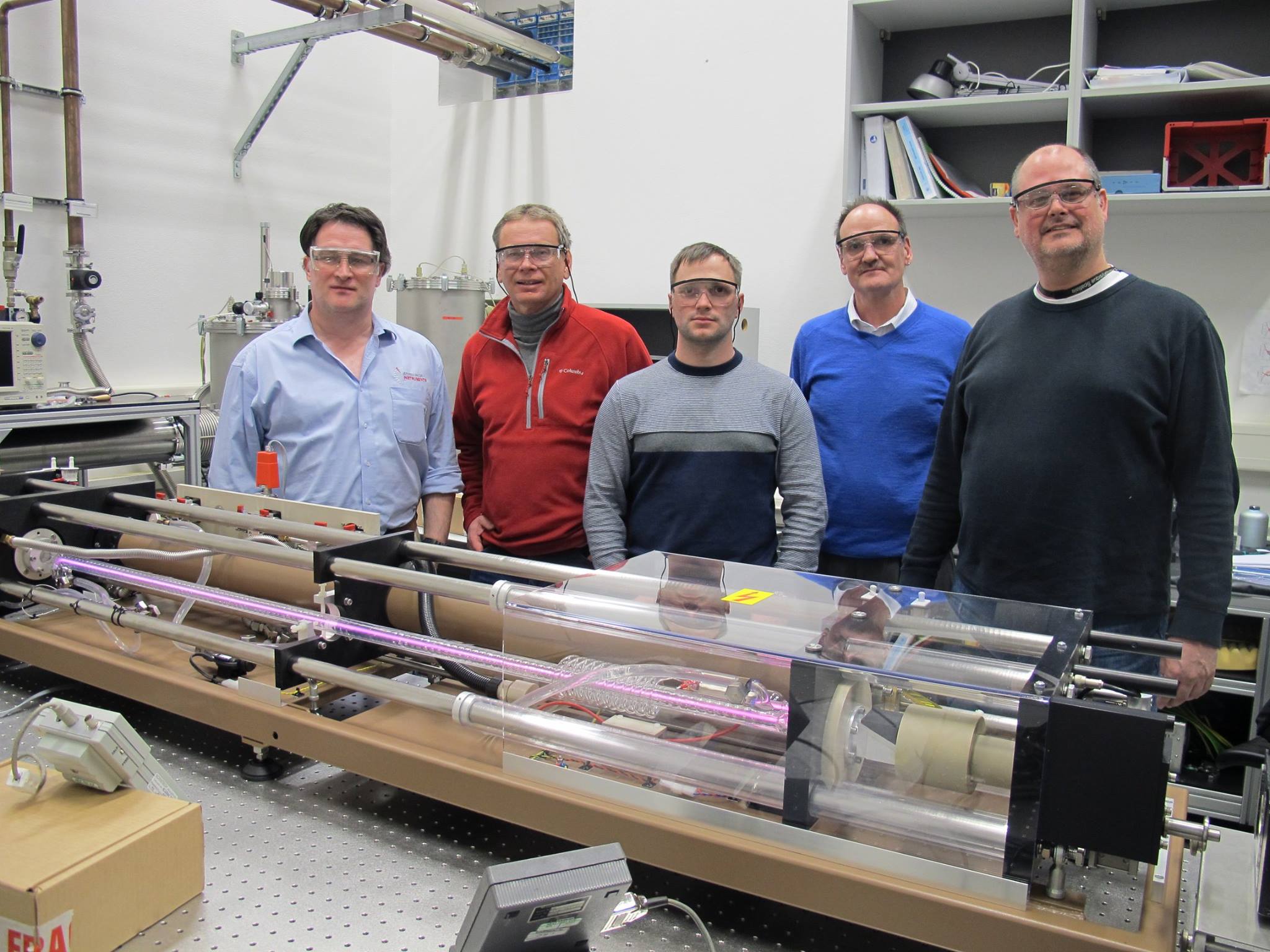Electron Spin Resonance (ESR) Spectroscopy Extends to 1 THz Range
We are delighted to have successfully completed the installation of an Edinburgh Instruments FIRL100 CO2/ FIR (THz) Laser system at Dresden High Magnetic Field Laboratory (HLD) Helmholtz-Zentrum Dresden-Rossendorf (HZDR).
The FIRL-100 laser will be used for the multi-frequency pulsed-field (up to 70 T) ESR spectroscopy of strongly-correlated magnets, including low-dimensional and frustrated spin systems, high-Tc superconductors and related compounds, multiferroics, etc.
Electron spin resonance (ESR) spectroscopy is based on the detection of resonance absorption of electromagnetic radiation corresponding to transitions between electron spin energy levels split by internal effects (e.g., crystal-field anisotropy, exchange interactions, etc.) [1] and/or by an applied magnetic field. The strength of such interactions in magnetic materials can vary from tens of millikelvin to hundreds of kelvin (which corresponds to a frequency range from tens of megahertz to tens of terahertz). That is why extending the frequency range of ESR techniques towards 1 THz (and beyond) appears to be one of the central issues in modern ESR spectroscopy.
The FIRL-100 features both CO2 pump laser and far-infrared (FIR) cavity in an invar stabilised integrated head. CO2 laser lines in the spectral region 9.1-10.9 micron are accessible via a movable mirror. The FIR laser output power is >150 mW at 118.8 µm with CH3OH gas. A handheld control unit is used for CO2 length control and for length control of the FIR cavity.
We are excited that with help of the FIRL-100 our customer at the Dresden High Magnetic Field Laboratory will be able to extend the frequency range of ESR techniques towards 1 THz.
As one of the world’s leading manufacturers of state-of-the-art gas lasers, we pride ourselves in being able to meet the most demanding research and technical requirements.



